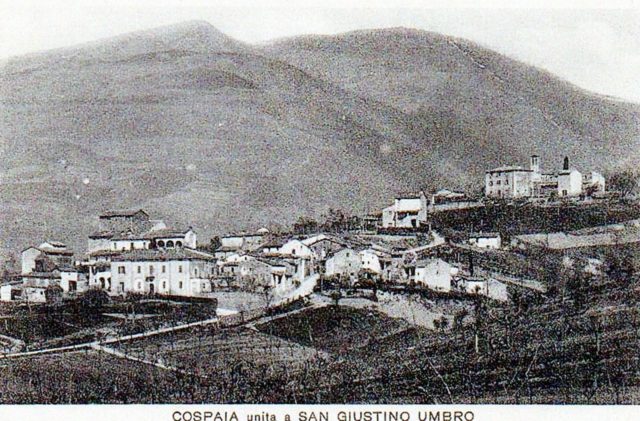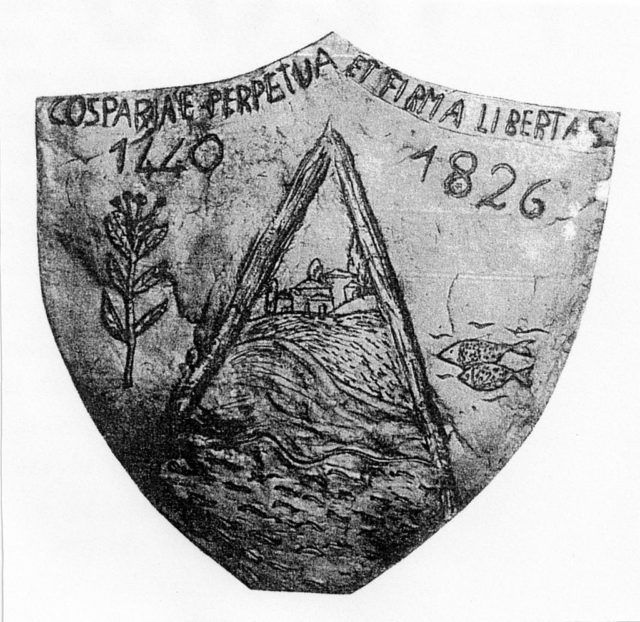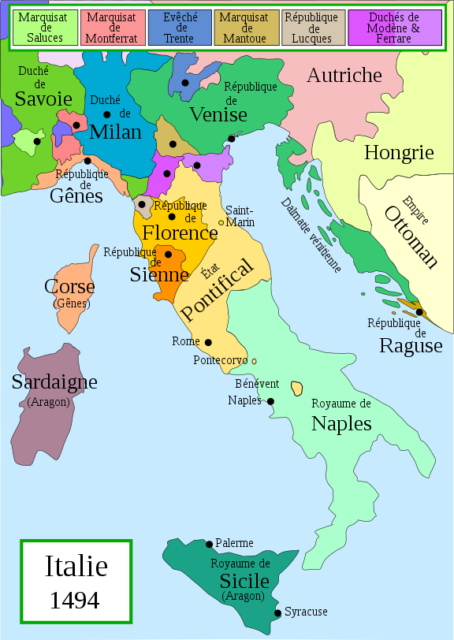Before Italy was unified in the 19th century, made a single country of strong national identity, it existed as a microcosm of many small realms, often containing not much more than a city and its surroundings.
In the 15th century, the early modern period was slowly opening its eyes to a world tired of medieval lords and pointless warfare. Art was flourishing in cities such as Florence, Venice, and Rome. Diplomacy was also gaining strength as a weapon that could achieve more with less if used smartly.
In this environment, an oddity occurred: a small republic emerged owing allegiance to no one and without any organized government infrastructure. No army and no leader, just a creed: Perpetua et firma libertas. Roughly translated from Latin as “Eternal and Firm Liberty,” this was the only law that ever ruled in the Republic of Cospaia―for 385 years.
Now to introduce some of the major players in this complex scheme who accidentally enabled such a country to exist:
First of all, the Pope. Pope Eugene IV was locked in a struggle with the Council of Basel, which opposed his religious and political authority. After years of bribing, spying and waging war against the Council, the Papal States, headed by Pope Eugene, requested a loan from an independent agent, who happens to be the second key figure in this story.

At the time, Cosimo Medici, the patriarch of the famous Medici family, agreed to provide the loan of 25,000 Italian gold florins. Let it not confuse you, this was a large sum for any period, for the coins had 54 grains of fine gold. A single such coin was worth approximately $140 in today’s dollars.
In order to keep the deal in order, the Pope had to promise a piece of land as a guarantee that he would repay his debt. The land in question was in Umbria, in central Italy. The town of Borgo San Sepolcro and its surroundings, together with its inhabitants, were promised to Cosimo Medici if the Papal State failed to return the loan.

Ten years pass and we reach the year 1441. Pope Eugene IV had just ended his quarrel with the Council of Basel but was unable to afford the loan repayment. He decided to simply give up his territory to the Florentine Duke Medici, in a rather gentlemanly fashion. Representatives were sent from both sides in order to make precise measurements of the land that was to be seceded from the Pope and granted to the Republic of Florence.
The agreement stated that the boundary was to be set on a small river serving as a tributary to the much larger Tiber. What both parties overlooked was that there were, in fact, not one but two tributary rivers that emptied into the great river of Tiber. The Florentine side thought that the river on the left was to be set as a boundary, while the Papal States understood that the agreement meant that the river on the right was to play the role of the border. Between the two tributaries was the small village of Cospaia.
Once the inhabitants of Cospaia learned that they were caught between a treaty gone wrong, they immediately proclaimed a republic, independent from both the Pope and the city of Florence. The newly formed republic introduced its own coat of arms and a flag in black and white, but they formed no real government, apart from a council of elders which was summoned for decision-making and judicial duties.
Cosimo Medici and Pope Eugene IV didn’t seem to mind, as they had bigger issues to discuss. The small republic was useful, after all, for it served as a buffer state between the two rivals.
There wasn’t much more than 100 houses in Cospaia at the time, with a population of around 300 people. Most of them were illiterate peasants, but they were well aware of the fact that they were given a chance by divine intervention to profit from this mistake.

The Republic of Cospaia became a free trade zone, in which merchandise was tax-free. This attracted merchants from all over Italy, and the economy started to flourish in this small landlocked state. Deemed by some as a “den of smugglers,” Cospaia indeed rounded up many peculiar characters, not all of them being on the “right side of the law,” but nevertheless, it all functioned somehow, guided only by the vague concept of liberty and the free market.
Even though prosperity could be seen very soon after the proclamation of independence, it was not until 1574,\ that the region became a notable economic factor ― one that influenced all the states in Italy.
It was tobacco that really put Cospaia on the map, for they were the first in Italy to grow this plant. It arrived from the New World, first interpreted as a medical herb, useful for curing ulcers, fevers, and syphilis. Soon its medical purpose was being questioned, while its recreational use gained popularity. Many aristocrats were discovering the joy of smoking tobacco, so much so, that the Church had to react.

The Roman Catholic Church was wary of anything that came from the “heathen lands” of the newly discovered Americas, apart from gold, of course. Under the pretext that it was the “devil’s plant,” the Church tried to halt the tobacco craze by banning smoking in churches.
Pope Urban VIII even went further in 1642, when he decided to excommunicate all smokers from the Church. All of Italy bowed to the papal will, but the Republic of Cospaia continued to produce tobacco in massive quantities, turning their business into a monopoly.

One more thing that contributed to the wealth of the smallest Italian state was the fact that the Cospaians never discriminated anyone in terms of commerce. The Jewish population in Italy was often marginalized by papal decrees which forbade Christians to trade with the Jews. In Cospaia, Jews were welcomed, and their merchants traded freely with others, contributing to the growing economy. One chronicler summed up this cooperation on the beginning of the 19th century:
In 1815, Cospaia had become an emporium of commerce. Trading houses, the most important companies, especially of the sect of the Israelites, from Genoa, Livorno, Civitavecchia, Naples, Ancona, etc., established their warehouses there, and even the most modest room of the villa, up until then used as agricultural offices, was changed into the depot of merchants, who kept their goods there, especially textiles and groceries, that entered free of any customs duty.

Soon after this golden age, Pope Leo XII decided that it was time to shut down this overgrown topographical error. Together with the Grand Duke of Tuscany, he forced the Cospaians to sign the Act of Subjugation, or face severe consequences.
In order to avoid a bloodbath, the leading households of Cospaia agreed to sacrifice their independence in 1826. They still managed to keep some privileges in terms of growing tobacco, but the ideal was crushed. It was Eternal and Firm Liberty no more.
Read another story from us: The Republic of Benin was one of the shortest-lived countries in history
For 385 years, the Republic of Cospaia had managed to avoid all historical changes that swept through the Italian Peninsula, but their time was up. Italy was already headed towards unification, and in the next 50 years, all other kingdoms and republics of Italia would join the movement for a national state, ruled by the central government in Rome.
